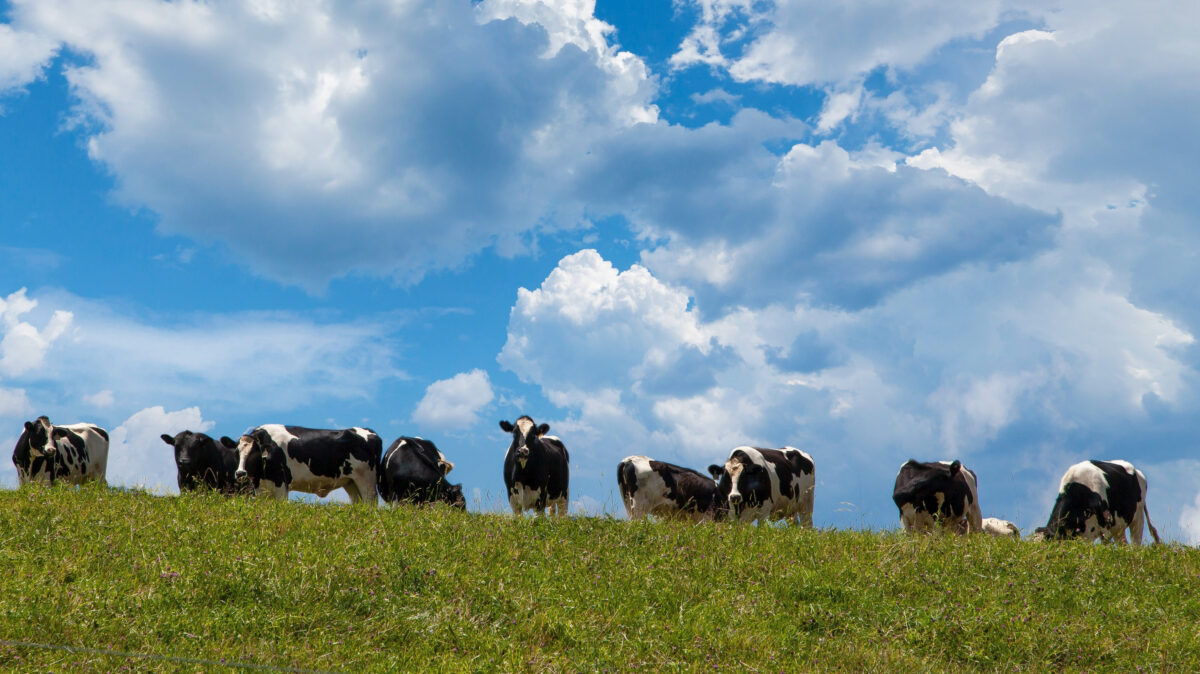Dairy Farmers Struggle as Milk Prices Fall and Costs Climb
Ching Lee

photo credit: Mark Stebnicki, North Carolina Farm Bureau
Ching Lee
After earning record-high milk prices in 2022, dairy farmers have seen their earnings plummet in recent months, with more operations struggling to stay in business and some closing their doors for good.
Their plight has prompted comparisons to the 2009 economic crisis that forced droves of dairies into bankruptcy. Some say it may be worse this time around due to additional inflationary pressures and higher interest rates that make it more costly for businesses to borrow money.
“This is a real downturn,” said Jack Hamm, a dairy farmer in San Joaquin County, California. “These last two months have been every bit as bad as 2009. There’s dairies for sale every week.”
In 2009, dairy farmers faced an unprecedented financial catastrophe as the global recession took hold. With an abrupt decline in export market demand and an oversupply of milk in the world market, milk prices tanked. At the same time, dairy farmers were paying historically high feed costs.
While milk prices were lower in 2009 than they are now, Hamm pointed out that overall production costs were “so much lower” back then.
Not only are dairy farmers paying more for feed, but all their other costs—including for labor, fuel and fertilizer—have skyrocketed.
Today, not only are dairy farmers paying more for feed, but all their other costs—including for labor, fuel and fertilizer—have skyrocketed.
“It’s tough right now to make ends meet,” Hamm said. “But it’s not the first time we’ve been through it.”
Dairy economists and analysts say milk prices have plunged because the slowing economy and higher food prices have softened demand for milk and dairy products.
Burgeoning milk supplies have not helped. In its report in June, RaboBank noted that global milk production continues to grow, though it’s beginning to lose momentum.
At the same time, food manufacturers continue to hike prices, as they “have learned that higher profits are to be found in ever-higher retail prices,” even though consumers push back by buying less, said analyst Rob Fox in his May report for CoBank.
In his report in June, Peter Fredericks, market administrator for the California federal milk marketing order, said Chicago Mercantile Exchange futures suggest most dairy product prices may continue to slide before improving in the fourth quarter.
With their milk checks shrinking and beef cattle prices remaining strong, dairy farmers have sent more low-producing cows and calves to auction, which brings more income.
“That’s definitely one of the bright spots, and that’s definitely helping us,” said David Barroso, a dairy farmer in Merced County, California.
Nationally, the milking herd has not shrunk. Total U.S. milk cows stood at 8.929 million head in June, up from 8.915 million head at the same time last year, with U.S. milk production expanding 0.2%, USDA reported.
Risk management tools such as forward contracts and insurance may help, but there are costs associated with them too, and they can “only do so much,” said Tom Barcellos, a dairy farmer in Tulare County, California.
While other producers may defer maintenance and other repairs on the farm until financial times are better, Barroso said upgrades he’s making this year to help cool cows from the heat have helped to maintain milk production. It’s too early to quantify how much, he said, but “there definitely have been improvements.” He noted his farm lost 20% to 25% milk production last summer without the changes.
“We’ve invested quite a bit into that,” Barroso said. “I’m not sure we picked the best year to do it, just because of cash flow and financial issues, but hopefully we’ll start to pay it off when that upswing happens.”
Ching Lee is an assistant editor of Ag Alert, a publication of California Farm Bureau. This column is a condensed version of an article published in Ag Alert and is republished with permission.
Top Issues
VIEW ALL